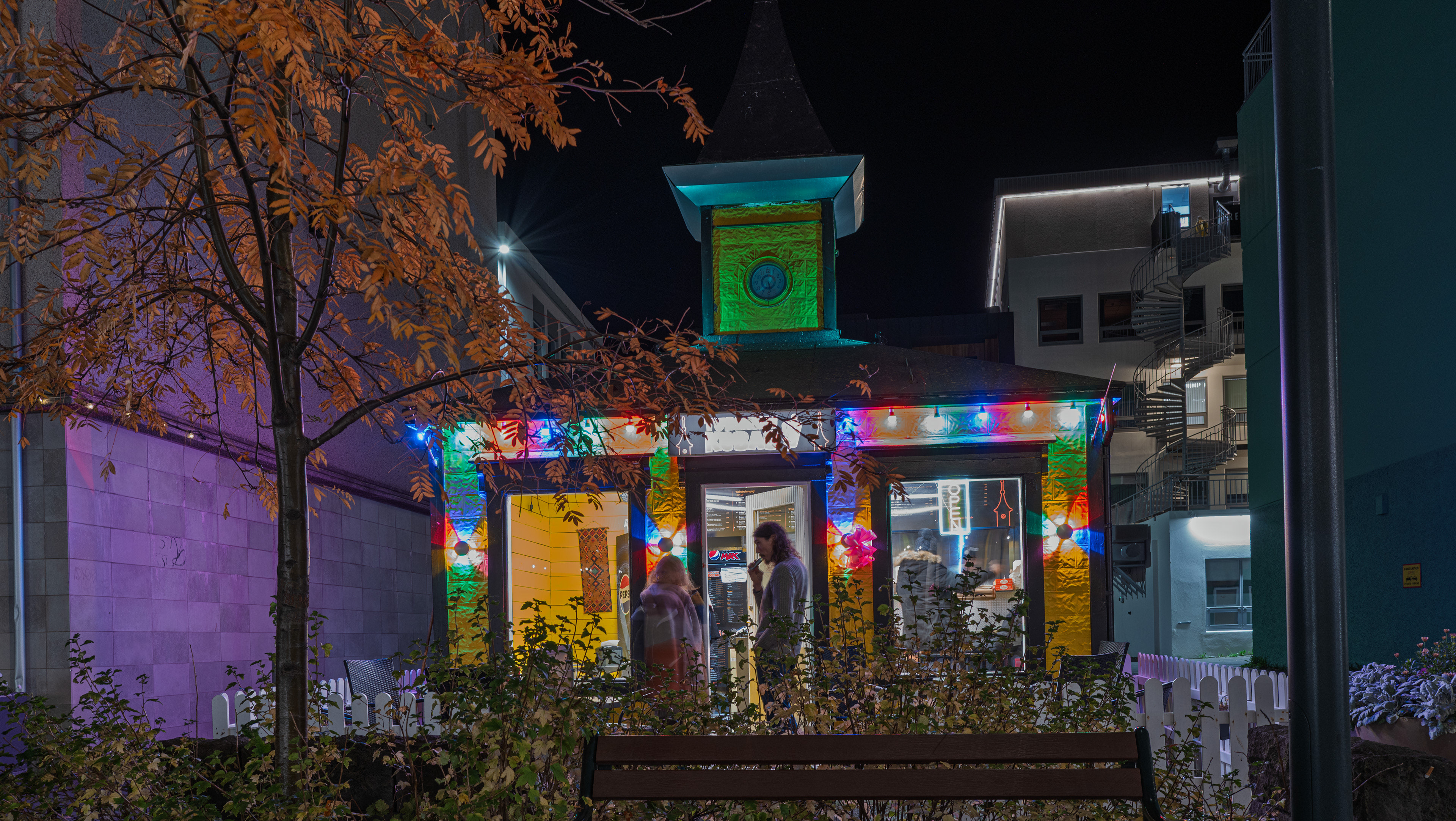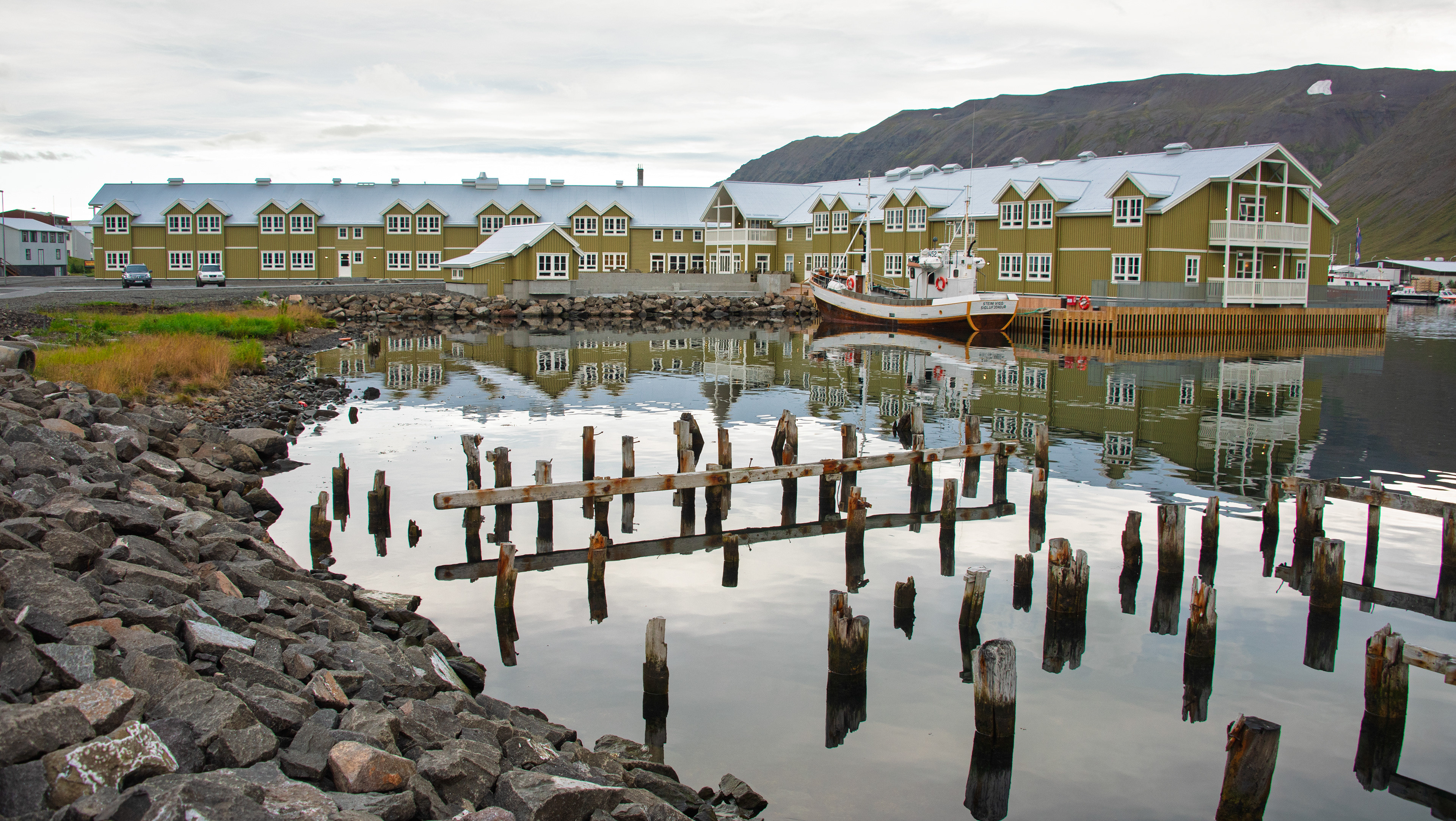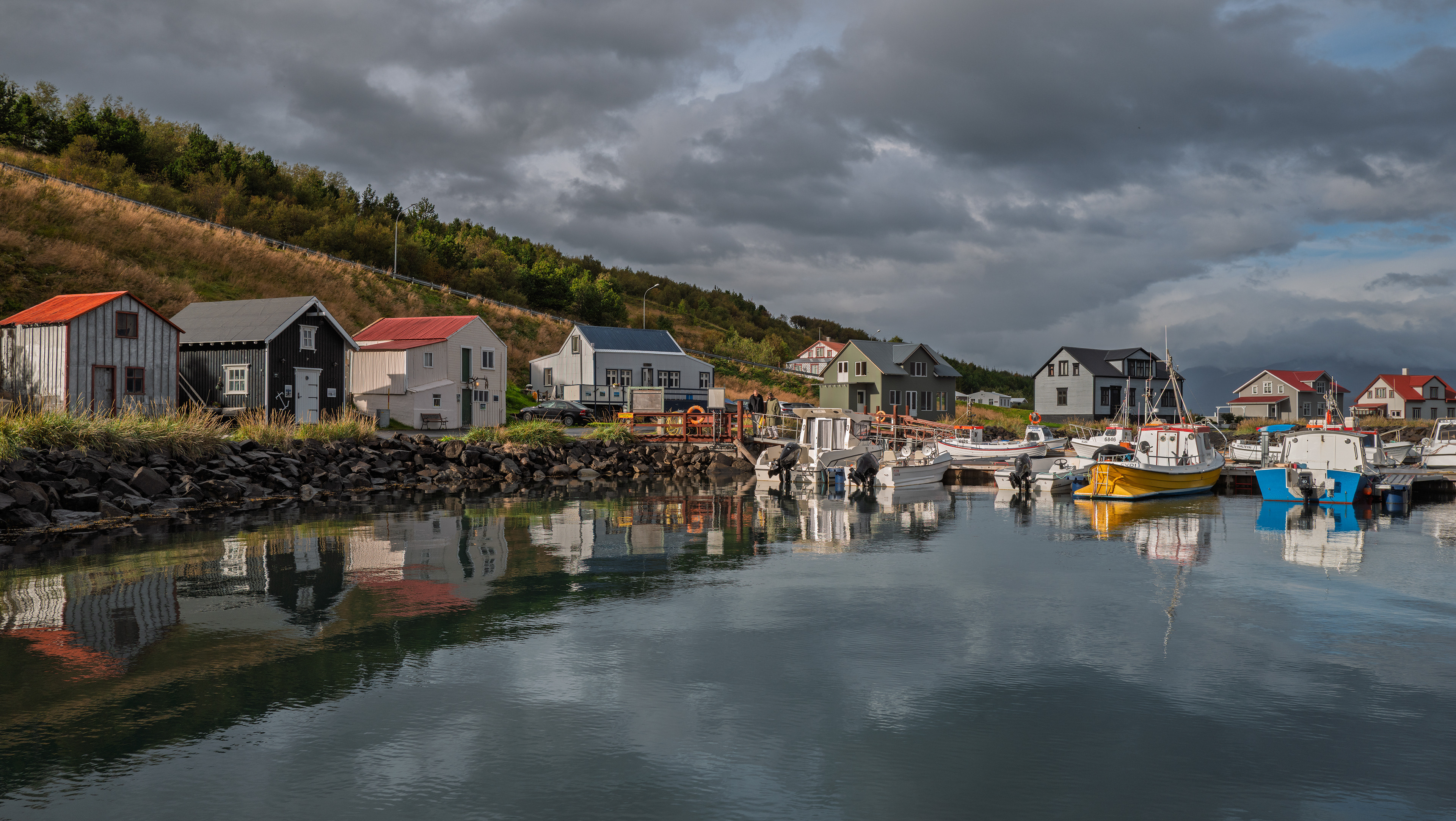Hafnartorg rising at the harbor, with Lækjargata running straight to Harpa’s glass sails.
Women's strike on October 24th, 2025
A view from the pond to Harpa towards Lækjargata
Tjarnargata in winter and the City Hall of Reykjavík by the pond, Tjörnin
Skólavörðustígur is a street that rises from Laugavegur to Hallgrímskirkja, featuring a high concentration of Icelandic design boutiques, galleries, and cafés within a few lively blocks. It is arguably the most photogenic shopping street in the city. The name of the street refers to the old "school cairn" located on Skólavörðuholt, the hill that the street ascends. This route was established as Reykjavík began to expand uphill in the early 20th century. At the intersection of Skólavörðustígur and Laugavegur, you'll find a vibrant rainbow painted on the road. Initially created as part of Reykjavík Gay Pride, this lively design has become a permanent symbol of inclusivity, serving as both an urban welcome mat and a popular attraction for visitors and locals alike.


